Abstract
Enhancing access to mountain areas due to the rapid pace of development in recent years, favours the movement of a considerable number of people to mountain areas. This generates a new trend in the will of learning alpine skiing by adults. In the current society, the use of specific training in alpine skiing is facilitated by the presence of rental centres, the necessary sports equipment and the presence of ski instructors. The learning of alpine skiing as a leisure activity after a specific training is followed by a decrease in the number of injuries, correct assimilation of the basic notions of skiing on the slopes, gaining self-confidence etc. The conditions of approaching a specific education represents an important factor of trainee and a decisive fact in its decision to make a good assimilation of informational knowledge for continue or not with this activity like leasure activity. The transmission and the assimilation of practical information is a very important moment and their correct assimilation by the adults depends on the skills and professionalism of the person who made the instructive process. The quality of methods and explanations will be create a new status psycho-physical condition on the part of adults and will allow an increased receptivity on the part of its.
Keywords: Alpine skiingadultspecific education
Introduction
Permanent promotion of tourist offerings and the evolution of travel facilities to various mountain locations have allowed more people to access the slopes during the winter season. This has also generated new wishes from tourists, namely, learn to ski, regardless of age.
In today's society, thanks to the development and technology of access to ski slopes, accommodation facilities and the availability of specific ski equipment hire, more and more people value these benefits and aim to learn to ski. These include adults who, regardless of the current profession, experience previously gained by practicing or not performing a sport (except for alpine skiing) want to learn to ski in a very short time. Thus, they have to look for a ski monitor, which will allow them to assimilate professional information during a few hours of training. ”Generalizing the opinions of specialists from different fields we can say that the capabilities of the coordinative assume the possibilities of the individual to acquire and perform actions complex motor (with a high degree of difficulty), conducting precise and economic movements in time and space, speed and strength required in accordance situations that arise during the conduct of operations” (Buțu, 2016).
The evolution of portable technology and its portability is felt in the efficiency of transmission and assimilation of information by adults (and not only), causing a concrete visualization of their driving actions. So it becomes more portable technology becoming increasingly essential in the assimilation of various physical movements: “in modern society and modern age the presence of mobile technology is everywhere around us. The main and most important aspect is the speed of online communication that we achieve with our peers, which generates a lower economic effort as well as efficiency and speed in sporting activities. The transfer of information through the use of mobile technology leads to less energy consumption, especially in the retrieval and rapid processing of information received. Mobile technology in sport is extremely different: the internet, mobile phones, camcorders, cameras, pulse-oximeters, video software and IT equipment” (Chera-Ferrario, & Pehoiu, 2013).
Problem Statement
Learning and practicing alpine skiing by adults will be effective and correct only through a theoretical and practical information approach of the specialist, which will generate specific educational benefits for the trained individual with high impact on the level of practice of alpine skiing.
Research Questions
In the adult age, the motor skills of the individual are a set of personal acquisitions of skills and knowledge, depending on the preoccupations he has had, whether or not he has practiced a performance sport. Also, an important role in these assimilations was also the personal determination the individual had in shaping new skills in different fields.
The brief acquiring of the notions specific to the learning of alpine skiing calls for the transmission of a personalization and individualization of the information, which will take into account the different factors which at that moment belong to the individual's information assimilation.
Purpose of the Study
Highlighting the impact of specific education on assimilating basic notions of alpine skiing by adults and practicing it as a free time activity.
Creating the possibility to correct the mistakes of execution by viewing their own movements as a result of the use of different variants of portable technologies: video highlights, photos etc. The benefits of these views, breaks in execution, will generate the removal and correction of mistakes implementing body positions during movement on skis.
Research Methods
Wish all of several adults to learn to ski, as a result of the promotion of tenders and tourist areas, but not only, generates an increased flow of tourists to the ski slopes. So the necessity of a professional information is received it is necessary in such situations. Therefore, the correct specific notions of assimilation of Alpine skiing, is an important step in learning correct and avoid injury problems on the slope of the adults.
The study aims is to embrace the importance of the way in learn specific practical notions of Alpine skiing and the impact of specific education.
This study was conducted over a period of 4 months, December 2017-March 2018, on weekends (Friday, Saturday and Sunday), on a total of 204 subjects, on average 4 subjects / day, 17 weekends, 12 subjects / weekend.
The people involved in the study were aged between 40 and 57, did not know the theoretical and practical notions of alpine skiing, and the specific learning information was taught to be assimilated individually or by 2 people at the same time. This has enabled a personalized approach that has made it easier to assimilate specific notions accurately and in a very short time, the work titled "Improving alpine skiing by transmitting knowledge focused on the beneficiary's personality", namely: ”Personalized approach knowing the type of temperament of the person who performed the educational process will generate positive values in terms of information, relational and emotional and ensures ownership in a relatively short time, basic technical specific alpine skiing mechanisms necessary while learning and practicing it” (Plăstoi, 2017).
Findings
During the study, the notions were assimilated by some subjects that will make a major difference in the ability to sky right and also to practice Alpine skiing, even if the learning was done in adulthood.
The results obtained by the subjects following the return fan are graphically interpreted in the figure
Performances were targeted:
-return fan:
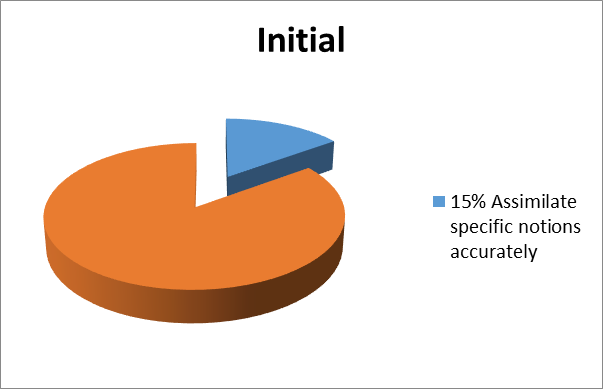
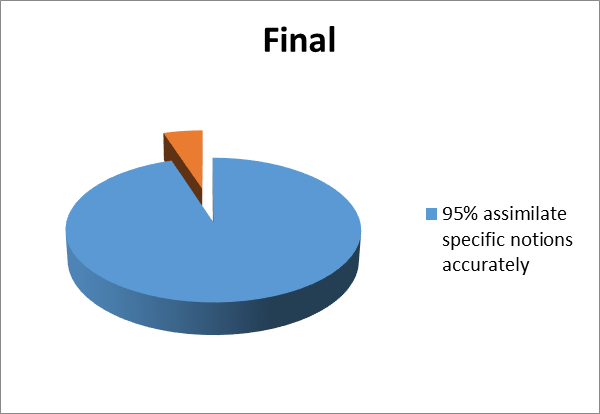
The results obtained by the subjects following the return with a drive are graphically interpreted in the figure
-return with a dive:
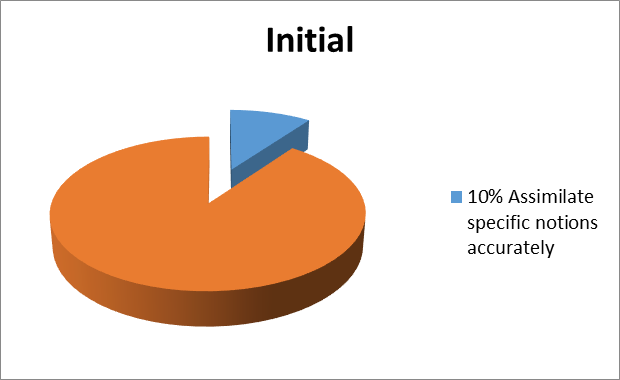
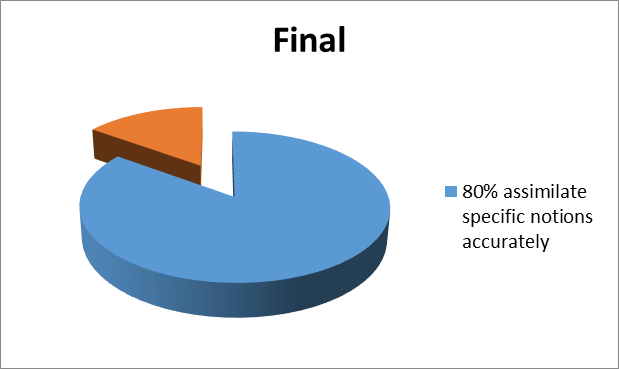
The results obtained by the subjects for detour closure of the total turn are graphically interpreted in the figure
-detour closure of the total turn:
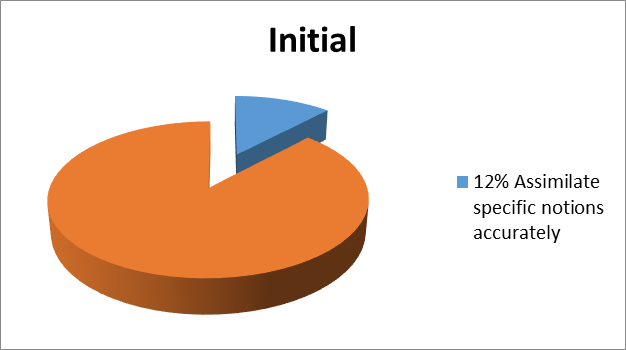
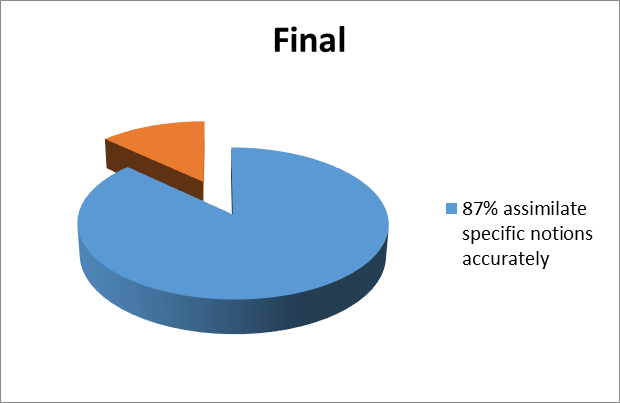
The results obtained by the subjects for usually followed by closing the slip and turn off are graphically interpreted in the figure
-usually followed by closing the slip and turn off;
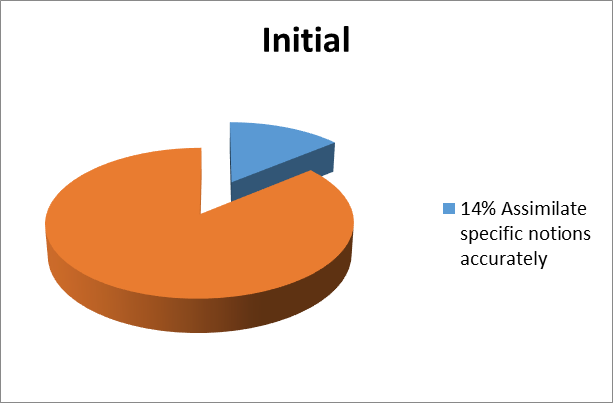
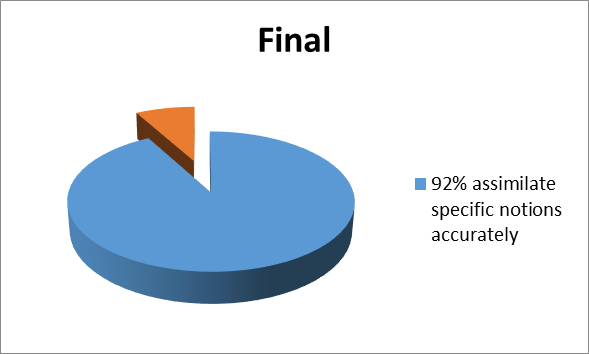
The results obtained by the subjects for keeping the stick in the snow, like a handbrake are graphically interpreted in the figure
-keeping the stick in the snow, like a handbrake:
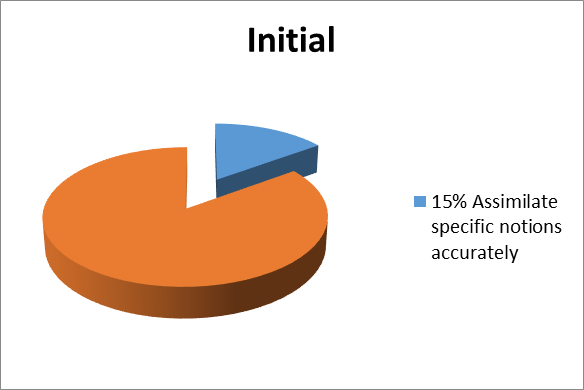
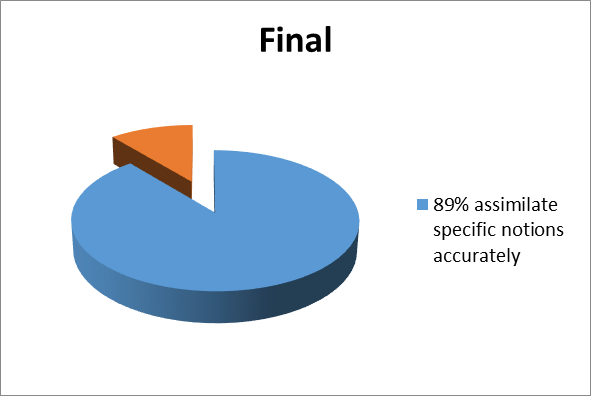
The results obtained by the subjects for pointing skiing ski towards the hill for the future turn are graphically interpreted in the figure
-pointing skiing ski towards the hill for the future turn:
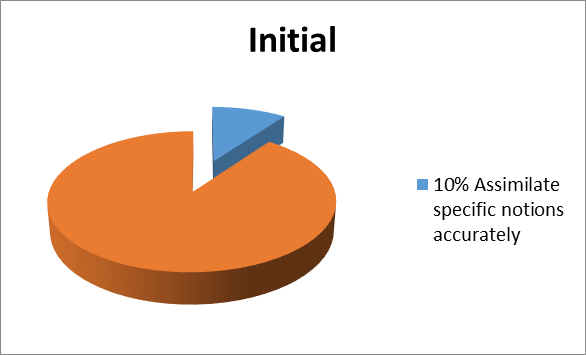
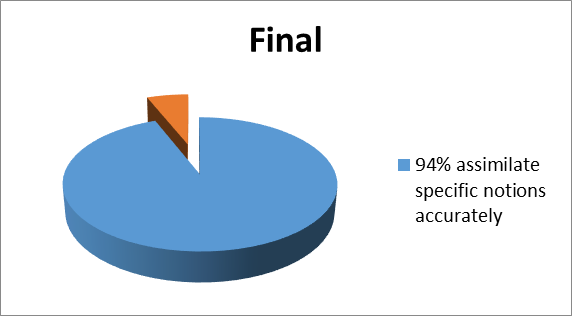
Differences in the level of motoring from one person to another in adulthood, the personal experience of these individuals generates different approaches so that: "Applying interdisciplinary concepts and transferring them through a corresponding similarity of body-kinesthetic intelligence and spatial intelligence as part of the theory of multiple intelligences and "perceptual-motor learning" creates prerequisites for the appropriate characteristics of the basic mechanisms required to learn alpine skiing” (Plăstoi, 2017).
” The key feature of the model is its elaborate construction, which, however appropriate and elaborate would be… According to this feature, the possibility appears justified the idea of continuous improvement and concomitant models of the same type of model” (Popescu-Bradiceni, 2014). For the human body ”miraculous evidence that aspires to reach initiative, meditation technique, the deepening of the inner life and thinking” can become from this perspective, the motivation to perceive and assimilate the specific movements (Curelar, 2016, p. 147).
” Neuromuscular control represents an efficient, objective and determinative mean of sports training, which allows us to identify the need of feedback integration from its extrinsic perspectives. …The ways that feedback can be integrated in the training process varies depending on the purpose that is established to be achieved, sport specificity, the way that its results are interpreted and approached” (Mihai, 2017, p.127).
Conclusion
The transmission and assimilation of the information necessary to acquire abilities to ski is capitalized in the conditions of approaching a specific education and represents an important moment for the trained on and a decisive fact in its decision to continue or not this activity.
Aware of the fact that an "investment" in their own education implies accessing professional information, the value and impact of assimilation of the specific alpine technique will result in an individual whose specific education has led to significant technical and attitudinal developments.
Learning and practicing alpine skiing by adults is completed efficiently and correctly only through a theoretical and practical information approach of the specialist, which will generate specific educational benefits for the trained individual, with major valences on the level of practicing alpine skiing.
Specific information transmitted in a professional way creates a correct spaces-perceptual assimilation of the sense of skiing on the snow, and not only, it will enhance confidence in the individual's own energy and the desire to ski later in the free time.
References
- Buţu, I. M., Cătună G. C., Teodorescu A. S., Iorga, A. & Gheorghe G. I. (2016). Testing method using space orientation ability to untrained person Matorin. Ovidius University Annals, Series Physical Education and Sport / SCIENCE, MOVEMENT AND HEALTH, XVI (2), 323-329. Retrieved from http://fefs.univ-ovidius.ro/images/pdf/conferinte/2016.
- Chera-Ferrario, B., & Pehoiu, C. (2013). Indispensable portable technology in adapted swimming and the progress of chilren with disabilities. The 9th International Scientific Conference eLearning and software for Education, Bucharest. Retrieved form https://apps.webofknowledge.com/Search.do?product=WOS&SID=D5cgIhOH7TzGggIRK82&search_mode=GeneralSearch&prID=0da4daef-83b2-4fd4-abd7-80640d78aaf4
- Curelar, M. R. O. (2016). Fictional romanian prose - a particular representation of the world. Annals of the „Constantin Brâncuși” University of Târgu Jiu, Letter and Social Science Series, 4/2016, 147, retrieved form http://www.utgjiu.ro/revista/lit/pdf/2016-04/01_ANNALS%20UCB-LETTER%20AND%20SOCIAL%20SCIENCES%204.2016.pdf
- Mihai, I. (2017). Progressive neuromuscular control improvement by using extrinsic feedback as learning tool, in swimming. Proceedings on Humanities and Social Sciences, 4 (8), 127. https://DOI:
- Plăstoi, C. D. (2017). Improving Alpine Skiing Learning by Transmitting Knowledge Focused on the Beneficiary's Personality. Sciences of Human Kinetic, 10 (59): 2, 65-70. Retrieved from http://webbut.unitbv.ro/bulletin/Series%20IX/Contents_IX_2_2017.html.
- Plăstoi, C. D. (2017). The theory of multiple intelligences and their application in alpine skiing. Bulletin of the Transilvania University of Braşov, Series IX: Sciences of Human Kinetics, V10 (59):1/017, 49-54. Retrieved from http://webbut.unitbv.ro/bulletin/Series%20IX/2017/BULETIN%20I%20PDF/07_PLASTOI.pdf
- Popescu-Brădiceni, I. & Plăstoi C. D. (2014). Synchronization and the performance sports model subjected to the philosophical interference. In I. Boldea (Ed.) Globalization and Intercultural Dialogue: Multidisciplinary Perspectives - Communication and Public Relations (pp. 93-100). Târgu-Mureș: Arhipelag XXI. Retrieved from https://s3.amazonaws.com/academia.edu.documents/36935224/Texte_Communication-GIDNI.pdf?AWSAccessKeyId=AKIAIWOWYYGZ2Y53UL3A&Expires=1552471348&Signature=98z%2BO6iHQspkNAhbUdKPVTVJkXo%3D&response-content-disposition=inline%3B%20filename%3DIulian_Boldea_Editor_Globalization_and_I.pdf#page=93.
Copyright information

This work is licensed under a Creative Commons Attribution-NonCommercial-NoDerivatives 4.0 International License.
About this article
Publication Date
15 August 2019
Article Doi
eBook ISBN
978-1-80296-066-2
Publisher
Future Academy
Volume
67
Print ISBN (optional)
-
Edition Number
1st Edition
Pages
1-2235
Subjects
Educational strategies,teacher education, educational policy, organization of education, management of education, teacher training
Cite this article as:
Plăstoi*, C. (2019). The Impact Of Specific Education On Alpine Ski Practice At Adult Age. In E. Soare, & C. Langa (Eds.), Education Facing Contemporary World Issues, vol 67. European Proceedings of Social and Behavioural Sciences (pp. 1359-1366). Future Academy. https://doi.org/10.15405/epsbs.2019.08.03.167
